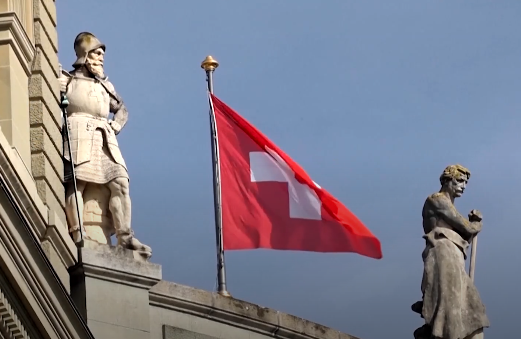
Here’s the twist: a quiet transatlantic framework just reframed costs and capital flows. And it did so with speed that surprised even trade watchers.
Background and Announcement
U.S. tariffs on Swiss goods, long stuck at a punitive 39%, are now poised to fall to 15% under a new framework. Officials in Washington, Bern, and Vaduz rolled out a non‑binding understanding that sets the ceiling and opens a path to a full deal. Crucially, Liechtenstein is included on the same terms, according to government statements and the joint communiqué.
According to available reports, the document is not legally binding. However, it sets a clear direction and a set of reciprocal steps. Reuters and Swiss government releases described it as a memorandum of understanding that triggers the tariff cut to 15%.
Here’s the twist: this is not just symbolic. Instead, the framework aligns Switzerland and Liechtenstein with the tariff caps the U.S. has offered to close partners. Moreover, it positions both countries for a faster reset of trade frictions.
You might be surprised that the announcement also bundled investment and regulatory pieces. Yet the strategy is obvious: tie lower tariffs to concrete economic gains, then lock in momentum for a final agreement.
Major Swiss Investment Commitments
Follow the money: the White House and Swiss authorities say companies from Switzerland and Liechtenstein plan at least $200 billion in U.S. investments by the end of 2028. Moreover, at least $67 billion of that is penciled in for 2026 alone.
That number is not a single mega‑deal. Instead, it’s a pipeline across industries with varied timelines and risk profiles. Consequently, the investment surge functions as both political cover and economic ballast for the tariff shifts.
Here’s the twist: the capital promises are a two‑way signal. On one side, they affirm U.S. market appeal. On the other, they show Switzerland’s willingness to anchor the relationship with tangible projects, not just rhetoric.
Investment Focus and Key Contributors
Where will the money go? According to available reports, the focus includes pharmaceuticals, medical devices, aerospace, and even gold manufacturing. Additionally, energy infrastructure and advanced manufacturing also make the list.
Evidence shows that big names are already in the mix. Reuters tallied major commitments from Roche and Novartis, citing about $50 billion and $23 billion respectively. Meanwhile, ABB and Stadler add industrial heft, from electrification to rail.
This matters for jobs and supply chains. Pharmaceuticals promise high‑value research and production footprints. But aerospace and advanced manufacturing carry multiplier effects across metalworking, electronics, and software.
You might be surprised that gold manufacturing even appears here. Yet Switzerland’s role in refined metals is significant, and U.S. demand for specialized components remains durable. Therefore, the sector list reads like a hedge across cycles.
Tariff Reductions and Market Access
The tariff architecture is the engine room. The U.S. intends to cap duties on originating Swiss pharmaceuticals and semiconductors at 15%, even under Section 232 actions. Consequently, companies get certainty where margins and planning horizons are unforgiving.
Switzerland will move too. According to official notes, Bern plans tariff‑rate quotas for U.S. beef, bison, and poultry at 500, 1,000, and 1,500 tonnes duty‑free, respectively. Additionally, Switzerland intends to cut import duties on U.S. industrial goods, seafood, and selected agricultural products.
There is also regulatory grease. Switzerland plans to facilitate acceptance of FDA‑cleared medical devices and to recognize U.S. federal motor vehicle safety standards. As a result, exporters could see lower compliance friction and faster time to market.
Still, details will matter. TRQ administration, product classifications, and origin rules often decide whether promised access translates to actual shipments. Therefore, companies should prepare to map SKUs and file early for quota.
Status of the Agreement
Let’s be clear: the framework is not yet the final deal. It is a roadmap with political backing and headline numbers. But the text explicitly says it is non‑binding under international law.
Nevertheless, negotiators set an ambition to conclude by early 2026. This timeline is aggressive but plausible, given the narrow scope and the clear tariff caps. In the interim, implementation steps for the tariff reduction could take several weeks once instruments are issued.
What no one is mentioning: timing risks often live outside trade ministries. Elections, legislative calendars, and market shocks can slow even “fast” processes. Consequently, companies should bank on the direction, not the exact dates.
Negotiation Process and Leadership
The rollout followed a flurry of high‑level talks. Swiss Economy Minister Guy Parmelin met U.S. Trade Representative Jamieson Greer shortly before the announcement. According to press accounts, the meeting was productive and cleared the way for the framework.
Meanwhile, USTR confirmed the broad contours and pointed to the White House documents for specifics. That coordination matters because it signals alignment between technical negotiators and political principals. Therefore, the odds of follow‑through look better than in past, stalled efforts.
Here’s the twist: this was framed not as a sweeping free‑trade agreement, but as a targeted fix. The advantage is speed and clarity. The risk is scope creep if stakeholders try to add unrelated agendas.
The Stakes and What’s Next
For U.S. consumers and manufacturers, the immediate upside is price relief and supply diversification. However, for Swiss exporters, the reward is predictability in high‑margin sectors like pharma and semis. Both sides win if logistics and compliance keep pace.
For agriculture, TRQs will test how quickly trade can scale. If quota fills fast, expect pressure for larger volumes. Conversely, if utilization lags, the politics get trickier.
What no one is mentioning: a 15% cap is still a tariff. Yet compared with 39%, it’s a reset that can unlock projects and jobs. Moreover, it narrows arbitrage versus EU suppliers, which helps U.S. buyers rationalize sourcing.
The upshot is simple. If negotiators hit the early‑2026 goal, this compact could become a template for targeted, reciprocal fixes. Until then, the watchwords are paperwork, timing, and follow‑through.
Bottom Line
This is a pragmatic bargain dressed in modest language. Lower ceilings on tariffs, clear sector priorities, and a pipeline of capital. As always, execution will decide the winner list.
But the signals are bright: 15% caps, TRQs with numbers, and $200 billion on the table. Consequently, the politics and the economics point in the same direction. Here’s the twist: for once, that might be enough to finish the job.
Sources
- Reuters: Switzerland wins US tariff rate cut to 15%, pledges $200 billion in US investments
- Reuters: Swiss government: US tariffs will be reduced to 15%
- AP News: Switzerland to boost US investment as deal struck to lower US tariffs on Swiss goods to 15%
- The White House Fact Sheet: The United States, Switzerland, and Liechtenstein Reach a Historic Trade Deal
- White House Joint Statement: Joint Statement on a Framework for a United States – Switzerland – Liechtenstein Agreement on Fair, Balanced, and Reciprocal Trade
- Swiss FDFA: Declaration of intent between the USA and Switzerland on US additional tariffs
- USTR: Ambassador Greer Issues Statement on Framework for a Historic Deal with Switzerland and Liechtenstein

